The Ultimate Guide To Lettuce Companion Planting
The Ultimate Guide to Lettuce Companion Planting
Lettuce is a popular vegetable that is easy to grow and can be enjoyed in many different ways. However, did you know that you can improve your lettuce harvest by companion planting?
Companion planting is the practice of growing different plants together in a way that benefits both plants. Some plants can help to repel pests, attract beneficial insects, or improve the overall health of the soil.
In this guide, we will discuss the best companion plants for lettuce, as well as some plants that you should avoid planting near lettuce. We will also provide some tips for companion planting lettuce in your own garden.
Benefits of Companion Planting with Lettuce
There are many benefits to companion planting with lettuce. Some of the benefits include:
- Increased yields. Companion planting can help to increase your lettuce harvest by attracting beneficial insects, which help to control pests.
- Improved soil health. Some companion plants, such as carrots and chives, help to improve the overall health of the soil. This can lead to healthier lettuce plants and a better harvest.
- Disease resistance. Some companion plants, such as nasturtiums, can help to deter diseases from attacking lettuce plants.
- Attraction of beneficial insects. Some companion plants, such as dill and fennel, attract beneficial insects, such as ladybugs and lacewings. These insects help to control pests, which can protect your lettuce plants.
Best Companion Plants for Lettuce
There are many different plants that can be companion plants for lettuce. Some of the best companion plants for lettuce include:
- Carrots. Carrots and lettuce are both cool-season crops that can be planted together. Carrots help to loosen the soil, which can benefit lettuce plants.
- Chives. Chives help to repel aphids, which are a common pest of lettuce. They also help to improve the flavor of lettuce.
- Cilantro. Cilantro helps to attract beneficial insects, such as ladybugs and lacewings. These insects help to control pests, which can protect your lettuce plants.
- Dill. Dill helps to attract beneficial insects, such as ladybugs and lacewings. It also helps to improve the flavor of lettuce.
- Fennel. Fennel helps to repel cabbage moths, which are a common pest of lettuce.
- Nasturtiums. Nasturtiums help to attract beneficial insects, such as ladybugs and lacewings. They also help to deter pests, such as aphids.
- Parsley. Parsley helps to attract beneficial insects, such as ladybugs and lacewings. It also helps to improve the flavor of lettuce.
- Spinach. Spinach and lettuce are both cool-season crops that can be planted together. Spinach helps to shade the lettuce plants, which can help to protect them from pests.
Plants to Avoid Planting Near Lettuce
There are also some plants that you should avoid planting near lettuce. These plants include:
- Broccoli. Broccoli and other members of the cabbage family produce chemicals that can inhibit the growth of lettuce.
- Fennel. Fennel produces chemicals that can repel beneficial insects, such as ladybugs and lacewings.
- Melons. Melons and lettuce compete for water and nutrients.
- Peas. Peas and lettuce compete for sunlight.
Tips for Companion Planting Lettuce
When companion planting lettuce, there are a few things to keep in mind:
- Plant the right plants together. Not all plants are compatible with each other. Be sure to do your research before planting any companion plants together.
- Plant the right plants in the right location. Some companion plants need full sun, while others prefer partial shade. Be sure to plant your companion plants in the right location so that they can thrive.
- Space the plants correctly. Companion plants need enough space to grow. Be sure to space your plants correctly so that they have enough room to spread out.
- Water and fertilize regularly. Companion plants need water and fertilizer just like any other plant. Be sure to water and fertilize your companion plants regularly so that they can stay healthy and productive.
Conclusion
Companion planting is a great way to improve your lettuce harvest. By planting the right companion plants together, you can attract beneficial insects, improve soil health, and deter pests. With a little planning, you can easily companion plant lettuce in your own garden and enjoy a bountiful harvest.
Lettuce is a delicious and versatile vegetable that can be enjoyed in many different ways. But did you know that there are certain plants that can help lettuce grow better? These are called companion plants, and they can provide a number of benefits to lettuce, such as:
- Attracting beneficial insects: Some companion plants, such as marigolds and nasturtiums, attract beneficial insects that help to control pests. This can help to keep your lettuce healthy and free of pests.
- Providing shade: Other companion plants, such as tomatoes and peppers, can provide shade for lettuce. This can help to prevent lettuce from bolting, which is when it starts to flower and become bitter.
- Improving soil quality: Some companion plants, such as beans and peas, can help to improve the soil quality around lettuce. This can help lettuce to grow better and be more resistant to disease.
If you're interested in learning more about lettuce companion plants, I recommend visiting Gardenia Inspiration. This website has a wealth of information about companion planting, including a list of the best companion plants for lettuce.
FAQ of lettuce companion plants
What are the best companion plants for lettuce?
Some of the best companion plants for lettuce include:
- Carrots: Carrots and lettuce have different root depths, so they don't compete for the same nutrients in the soil. They also help to attract beneficial insects, such as ladybugs and lacewings, which eat aphids.
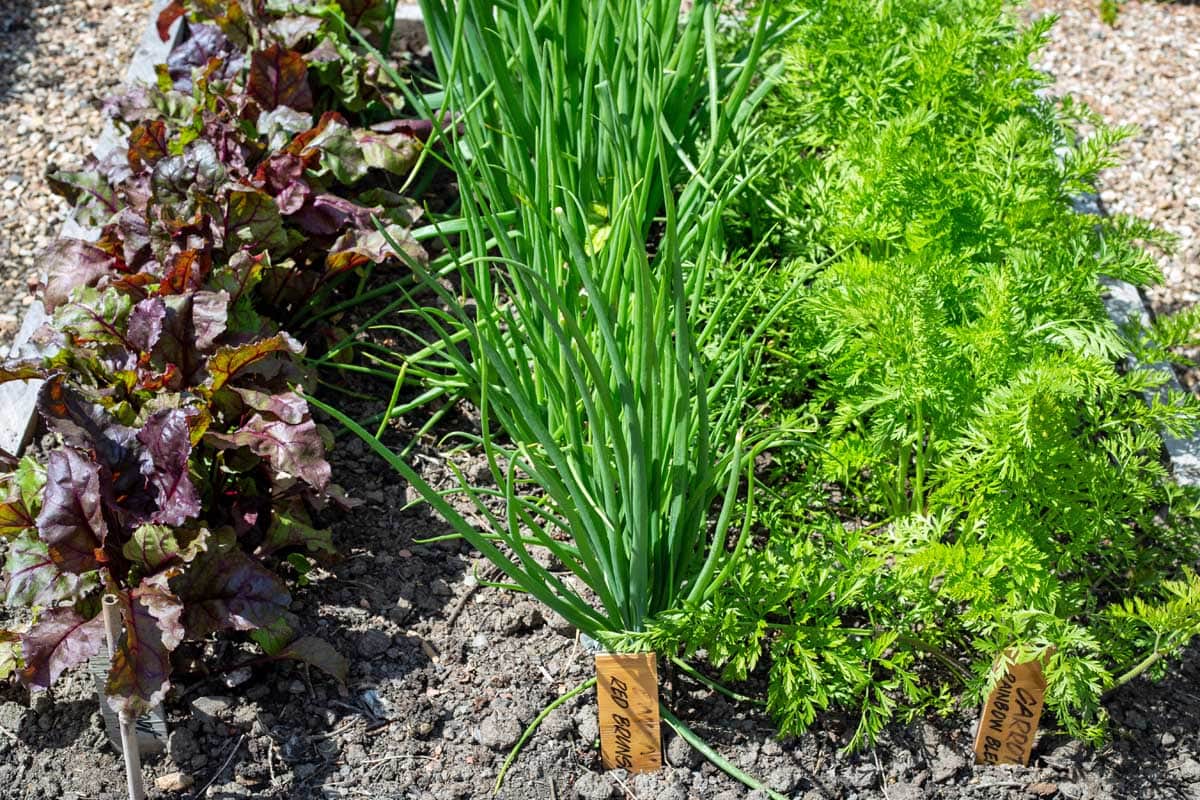
- Marigolds: Marigolds help to deter pests, such as nematodes and aphids, and can help to improve soil health. They can also be a trap crop for slugs: plant them close to lettuce to keep them safe.
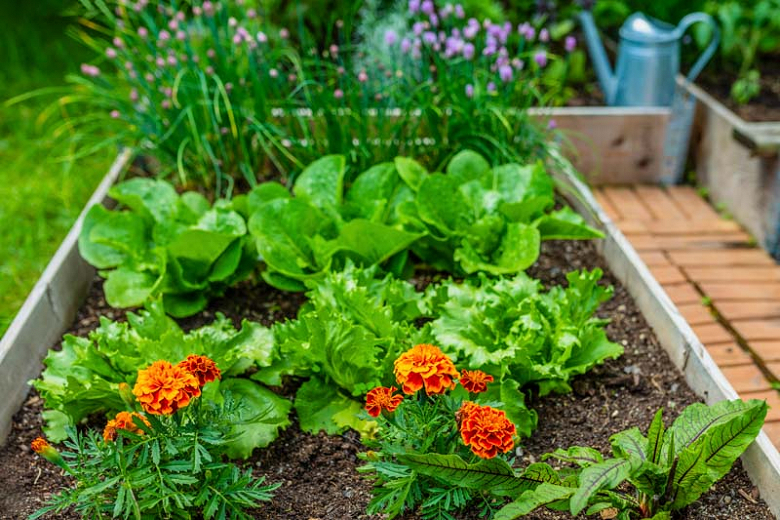
- Nasturtiums: Nasturtiums attract beneficial insects, such as predatory mites and parasitic wasps, and deter insect pests, such as the infamous beetles and aphids. They also add a splash of color to your garden.

- Onions and Shallots: Onions and shallots help to deter pests, such as aphids, and they discourage rabbits. They also have different root depths, so they don't compete for the same nutrients in the soil.

- Herbs: Many herbs, such as chives, dill, and basil, are good companion plants for lettuce. They help to deter pests, attract beneficial insects, and improve the flavor of your lettuce.

What are some bad companion plants for lettuce?
Some plants that should not be planted near lettuce include:
- Cabbage family: Plants in the cabbage family, such as broccoli, cauliflower, and Brussels sprouts, can attract pests that also target lettuce.
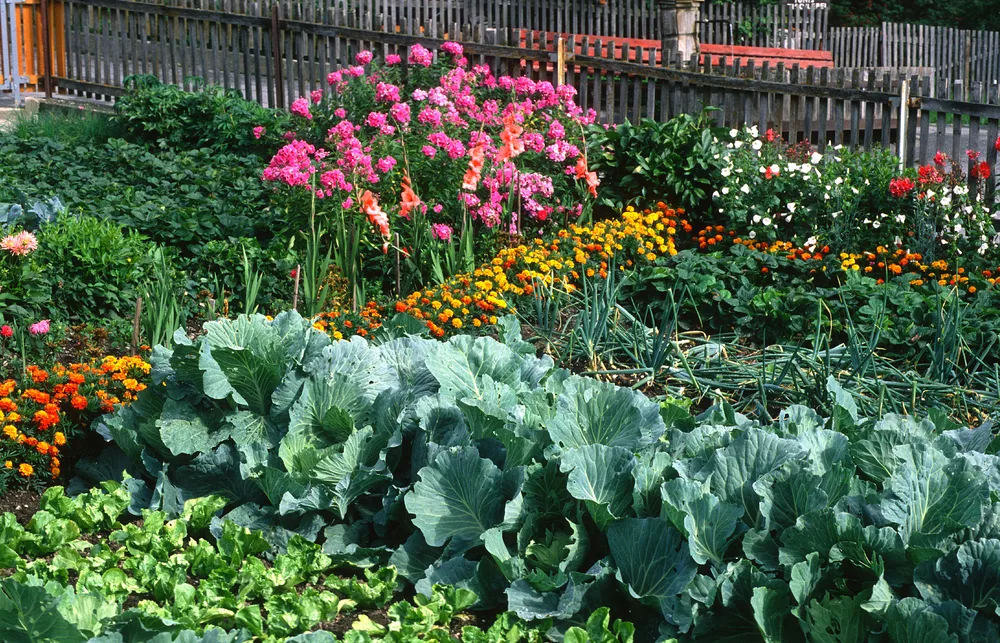
- Peas: Peas can compete with lettuce for nutrients and water.
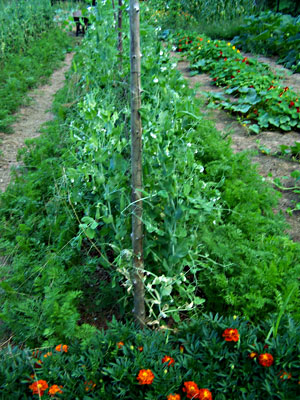
- Tomatoes: Tomatoes can attract pests that also target lettuce, such as aphids and whiteflies.
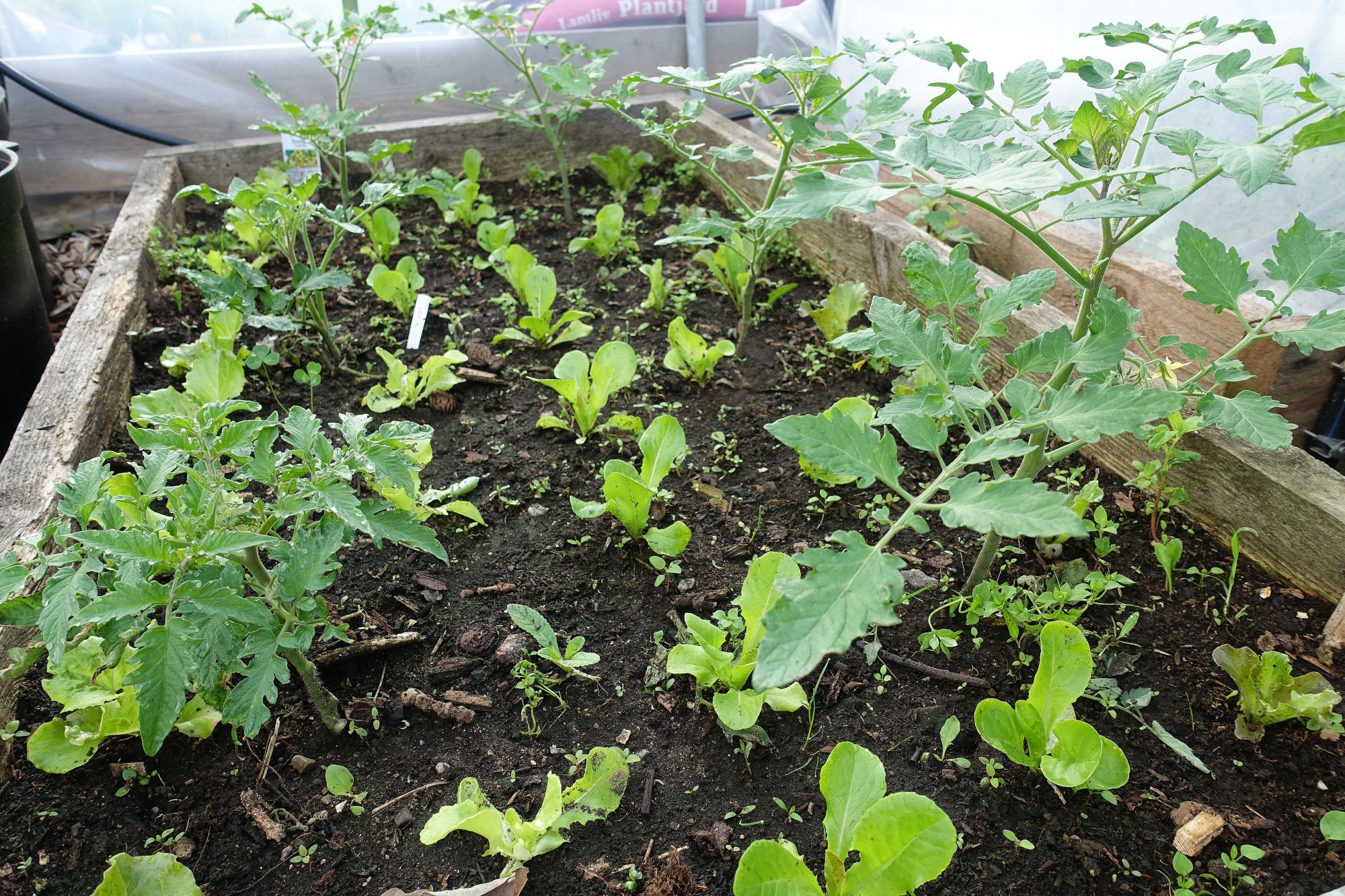
How do companion plants benefit lettuce?
Companion plants can benefit lettuce in a number of ways, including:
- Attracting beneficial insects: Some companion plants, such as marigolds and nasturtiums, attract beneficial insects that help to control pests.
- Improving soil health: Some companion plants, such as carrots and onions, help to improve soil health by adding nutrients or breaking down organic matter.
- Decreasing competition for resources: Companion plants with different root depths or growth habits can help to decrease competition for nutrients and water.
- Adding diversity to the garden: Companion planting can help to add diversity to the garden, which can make it more resistant to pests and diseases.
What are some tips for companion planting with lettuce?
Here are some tips for companion planting with lettuce:
- Choose companion plants that have different root depths and growth habits. This will help to decrease competition for resources.
- Plant companion plants that attract beneficial insects. This will help to control pests.
- Plant companion plants that improve soil health. This will help to provide lettuce with the nutrients it needs to grow healthy.
- Experiment with different companion plants. There is no one-size-fits-all solution for companion planting. The best way to find the right companion plants for your garden is to experiment.
Image of lettuce companion plants
- Image 1: Lettuce and carrots. Both plants are cool-season crops that grow well together. Carrots help to deter pests from lettuce, and lettuce provides shade for carrots, which helps to keep them cool.

- Image 2: Lettuce and chives. Chives help to deter aphids and other pests from lettuce. They also attract beneficial insects, such as ladybugs, which help to control pests.

- Image 3: Lettuce and tomatoes. Tomatoes help to deter the whitefly, a common pest of lettuce. They also provide shade for lettuce, which helps to keep it cool.

- Image 4: Lettuce and beans. Beans fix nitrogen in the soil, which helps to improve the growth of lettuce. They also provide shade for lettuce, which helps to keep it cool.

- Image 5: Lettuce and marigolds. Marigolds help to deter nematodes, a common soil-borne pest of lettuce. They also attract beneficial insects, such as ladybugs, which help to control pests.

Post a Comment for "The Ultimate Guide To Lettuce Companion Planting"